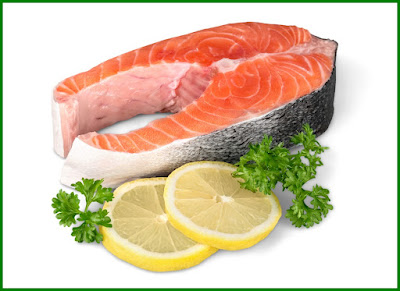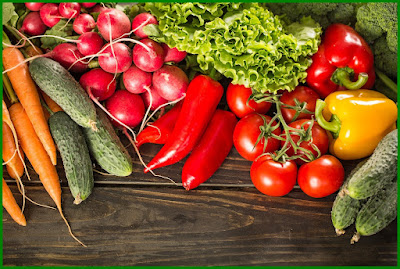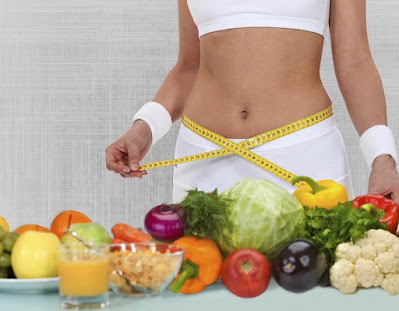At half past one, the stomach begins to growl. Time for lunch! But if work is already stacked on the desk, your food will probably not have the nutrients that you need. In order to work, however, your body needs to be regularly supplied with them - especially if you want to lose weight. Avoid these 8 food traps at lunch time, as they sabotage your diet and even provide you with a few extra kilos.
Mistake 1: You eat while walking
Are you
also among those who quickly get a snack from the cafeteria and eat on the way
to the office? Then, unfortunately, we have bad news for you: according to a
study, you're eating 30% more calories than you would sitting down. Take your
time with food, it does not have to be an hour. We are all stressed. But 15
minutes are sufficient for a healthy lunch. And you can definitely make that
kind of room, right?
Mistake 2: You put off lunch
Even if
your stomach is not growling, you should have lunch between noon and 2PM.
Anyone who waits longer risks being attacked by a sudden bear's hunger, and
this usually ends with jamming your mouth full of fast food and the like.
Furthermore, your body needs new nutrients in the form of food every four
hours. Otherwise, your metabolism slows down and that means that it burns fewer
calories.
Mistake 3: You eat too much salad
"What
is this, a weight loss error?" Do not get us wrong: salad is healthy, has
few calories, no fat and is therefore perfect for losing weight. The green
leaves and raw vegetables in it are just fine. A large weight loss trap,
however, lurks in the salad buffet over at the canteen between calorie-rich
dressings and toppings such as croutons or cheese, e.g. feta, mozzarella or
Parmesan.
Anyone
who puts too much of any of that on their plate turns their really healthy
salad into a small calorie bomb. So: in the future, more salad (yes, only the
green leaves), more vegetables and fewer toppings. "I will never be
satisfied." Do not panic, just combine your salad with a roll, a brine or
a soup. When dressing, less is more. A shot of vinegar, oil, salt and pepper
are already sufficient and taste much better than fatty toppings.
Mistake 4: You go out to eat every day
Having
lunch with colleagues is fun, that much is clear. It's also hard to lose weight
during this time. On most menus, there are lots of dishes behind which there
are a lot of calories hidden. The portions are usually very generous and are
good to eat. In addition, it is rather costly to go out to eat. It is healthier
and cheaper to cook yourself.
Simply
cook your lunch the night before. Sounds dull? It's easy to prepare your food
with 'Meal Prep' containers. And do not worry, that does not mean that eating
out is taboo, just not every day.
Mistake 5: You have diet soft drinks while you eat
A cold
refreshment is a good lunch for most. "It's not so bad if it's
light." Unfortunately, that is false. The sugar is replaced with
low-calorie sweeteners and since you only fake delivering calories to your body
with the sweet taste, the belly quickly starts to growl again. It waits longingly
for the promised energy. Better alternative: a large glass of water with a
little lemon.
Mistake 6: You eat in front of the computer
A
popular slimming sin at lunch and especially "popular" when work is
again piled on top of your desk. You're paying attention to a screen, while
shoving something mechanically into your mouth. The food becomes a side issue
and that is the danger. Your attention is somewhere else, so you do not realize
when you are really full. In the worst case, you continue to eat until the
plate is empty. You then pay the tax of a bloated and full belly that makes
work in the afternoon much more difficult. By the way: the same also applies to
the TV.
Mistake 7: You eat packaged snacks
At
first glance, the packaged salad or sandwich look like a healthy meal. But
appearances can be deceptive. In the dressing, the topping cheats you by
actually containing calories that settle on your hips. And the dishes are not
really as tasty. In this case, the following should be the preferred step: cook
yourself, according to the principle of the Meal Preps (see point 4). You know
what's inside and it tastes better. You do not have to do it every day, but 1
to 2 times a week will do just fine.
Mistake 8: You skip lunch completely
If you
skip lunch completely, you will not only have to battle an annoying feeling of
hunger, but also lack of energy. And only to save 500 calories at lunch?
Definitely a bad idea. Your body needs regular nutrients to maintain all its
functions. If it is not supplied with nutrients, your metabolism will slow down
and you will burn fewer calories - while losing weight in a counterproductive
way. In addition to that, the feeling of hunger grows more persistent, just
like the hole in your stomach. This is not only unpleasant, but ends with
gaining more than the 500 calories you saved earlier when you have dinner.
You
won't be hungry in the future if you consume the following: long-chain
carbohydrates, dietary fiber and plenty of protein, which should be on the menu
at noon, because they are long-lasting and prevent you from getting hungry
without overloading your calorie count.










